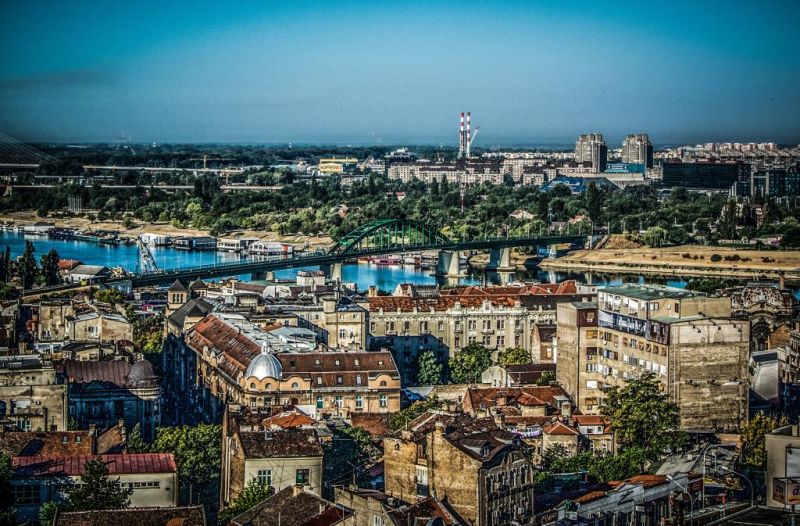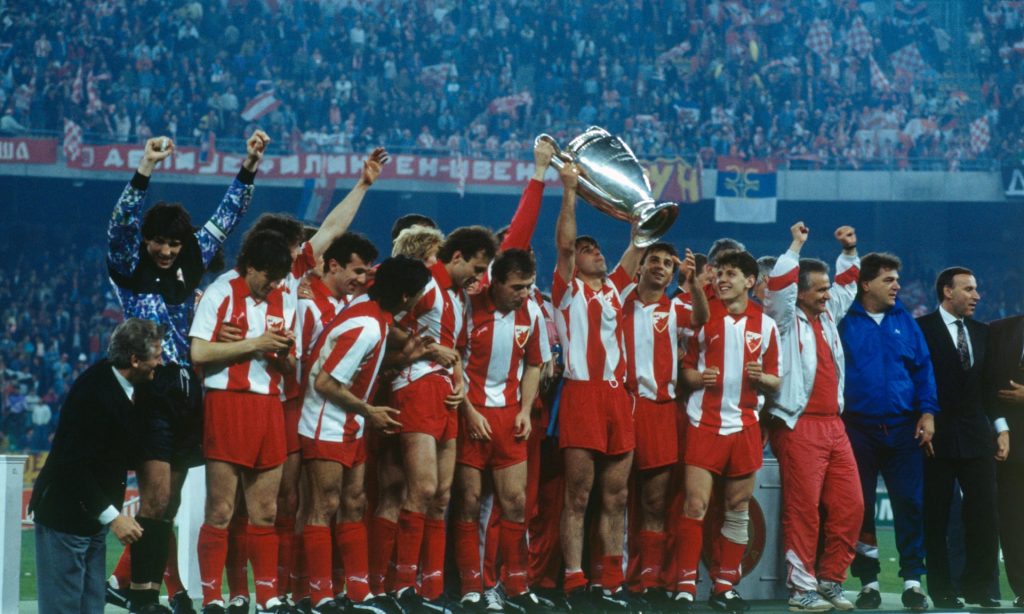So, you have found yourself in Belgrade, by chance or destiny, but here you are now and you want to know more. Well, you are in the right place and time! In this medium-length article (stay with us till the end, please) we will explain where exactly you are, some historical background, and some basics that will get you around the city fast and make you fall in love with it.
So, without further ado, we start:
Geography
Belgrade is located at the confluence of two big rivers – Sava and Danube.
River Sava brings to Belgrade waters from over 50 smaller rivers from Dinaric Alps and connects three capitals – Ljubljana, Zagreb, and Belgrade.
The Danube is the second largest river in Europe, and it connects four capitals – Vienna, Bratislava, Budapest, and Belgrade.
Danube and Sava mark the border between Central Europe and the Balkans. They have always been the border between civilizations, between the East and the West. Most important routes coming from Europe to the Asia Minor pass through Belgrade, making it the melting pot of cultures and one of the most important cities in Southern Europe and the Balkans.
Historic background
Belgrade was first founded by the Celtic tribe called Scordisci around 400 BC. The first recorded name was Singidun, meaning “the fort on a hill”. Romans also thought it was neat to have a fortress on this specific hill, so they conquered it and add “UM” to the name, making it – Singidunum. Name Belgrade came with the Slavs, which named the city after its white walls of stone, Beo – white, Grad – city. “Beograd”, the Slavic name was first mentioned in the 8th century.
Being on the crossroads and on two big rivers and several important roads, Belgrade was interesting for many nations. The one that controls Belgrade, controls the entire region. In its recorded history, Belgrade was razed to the ground (not a stone left standing on a stone) more than 40 times. All this destruction left a serious mark on the city.
To learn more about the interesting history of Belgrade, you can take a Crash course through Serbian history!
Which brings us to the next chapter:
Modern Belgrade

Savamala district
Famous French architect Le Corbusier said that Belgrade is the ugliest city built on the most beautiful place in the world. He is kind of right about that. As Belgrade was destroyed so many times, we do not have that many old buildings like other European capitals like Budapest or Vienna. Instead, we have an architectural mess, a mix of old and modern which cannot exactly be described as “a good mix”.
Today Belgrade has 1.6 million people living in it. If you add all the students, refugees from the wars of the 90s and other people who are just “temporarily” living or working here, that brings us to a final number of more than 2 million people.
There are 3 completely different parts of Belgrade: The Old city (south of the rivers), New Belgrade (the communist part of town) and neighborhood of Zemun (Austro-Hungarian part). All three parts have their own distinctiveness and are very different from each other in many ways.
The Old Town – Stari grad
The Old town is usually considered the part around Kalemegdan fortress and around the main pedestrian area – Knez Mihailova Street. Districts like Dorćol, Savamala, Kosančićev Venac are the prime examples of Old Belgrade. You can visit this part of the city on foot, as everything is relatively close by.
New Belgrade – Novi Beograd
New Belgrade, the modern part, is on the other side of the river. It was built after World War 2, in the time of Yugoslavia. New Belgrade is a concrete utopia, built to represent the best of Yugoslavia and its nations. You will see lots of brutalist architecture here, everything is made out of concrete, but it is also very green. The buildings are not that tall, and pretty far from each other, which leaves enough space for the parks and greenery.
Zemun – a city within a city
Zemun is now a neighborhood of Belgrade, but before WW2 it was actually a different city. It is a more “german-like” kind of town, with baroque influences visible at every corner. People in Zemun are very specific too, although they are part of Belgrade for more than 70 years now, they do not consider themselves as Belgraders. If you ask someone from Zemun where is he from, he will proudly tell “From Zemun”, not mentioning Belgrade at all. Lifestyle is indeed different here, the pace is slower and people are more laid back. You can enjoy good fish restaurants here on the Danube, and enjoy the view from the Gardoš tower, one of the best viewpoints in the city.
To discover more about other Belgrade districts, join us on a vintage bike tour!
Belgrade tips and tricks
As you already suspect, Belgrade is not a good example of a standard European sightseeing capital. It is not a living museum city like Prague, it does not offer grand architecture like Paris, but it is a very unique mix of creativity, staggering history, good food, and laid-back hedonism. It is very alive, at any time of day and night you will see people on the streets, doing something. Here are some basic tips to help you plan your stay here accordingly:
People
Everyone agrees about one thing: Belgraders are kind, fun and easygoing. It is easy to meet someone, and everyone will try to help you. But beware, people here will try very hard to feed you, give you shelter and make you drunk.
Language
Most of the younger population (< 30) speak perfect English, or at least enough to explain something and give you directions. We understand most of the other Slavic languages, and many people understand Spanish because of the Mexican TV soaps.
Currency
The local currency is a Serbian dinar and it is the only legal method of payment around here. 1 euro is worth around 120 dinars, while for 1USD you will get 100 dinars. In 90% of the shops you can pay by card, and also in most of the restaurants, but it is good to have some cash with you as well.
Food
Belgrade is a Mecca for gourmets and food-lovers! Whatever you try, you won’t make a mistake. Our diet mostly consists of meat and lots of it. Portions are huge, so be careful. Prices in restaurants vary, but for 5-8 euros you can get more than a decent meal and feel the true taste of Serbian national cuisine. Street fast-food stands are also great, you can get a “pljeskavica” (burger, but huge) for around 2 euros, and pick a huge selection of salads and side dishes for free. Read more about our food recommendations here.
Accommodation
Belgrade has only recently discovered Airbnb, and you can get a cozy apartment in the city center for a decent price, something between 20-40 euros per night. There is also a wide selection of hotels (moderate prices) and hostels (budget). Check our blog again soon for more information about accommodation in Belgrade!
Taxies
…are relatively cheap here, most fares up to 5km cost around 700-800 dinars. Drive to the airport will cost you something like 15 euros. Always try to call some taxi association (ask someone to call you a ride) or use an app. Beware of the frauds! Always ask before entering the car about the price estimate.
Transport
…is not as good as it used to be. Buses are old, but they will take you where you need to be. Tramcars are quite charming, especially tram no.2, which goes in a circle around the Old town (marking a border of the city center core, and a place where everyone tries to live). As for tickets, a single ride will cost you 90 dinars, but you need to buy a plastic card in a street shop (kiosk) and buy some credit on it, and validate it inside the bus. Although it is a bit hilly, we suggest renting a bike and exploring the city without endless waiting for public transport.
Safety
Belgrade is one of the safest cities in Europe. The crime rate is very low, and we do not have neighborhoods where you must not walk alone at night. It is also very well lid, and there are passersby at any time of the day and night everywhere.
Nightlife
This is a city that never sleeps, that is a fact. You just need to find the perfect club for you, and you are all set. Also, don’t miss the chance to visit many good pubs in the center before you head out to find that club.
Tours and sightseeing
Belgrade is still overlooked by travelers, but over years, more and more tourists discover this region and the offer of private tours expands every year. Most of the people visiting Belgrade are young adventurous travelers, so the tours on offer were tailor-made for them. Whether you like something urban and alternative or you are more into nightlife, or graveyards, for example, there is a tour for you out there.

New Belgrade blocks
Consider this as a short introduction to Belgrade, and consider us your honest guides to this city. Return to our blog soon for more articles where we explain many things about our city and try to make your stay as enjoyable as possible.
If you have any questions, please leave a comment in the comment section below.
Don’t forget to share! See you again soon with more interesting stories!












